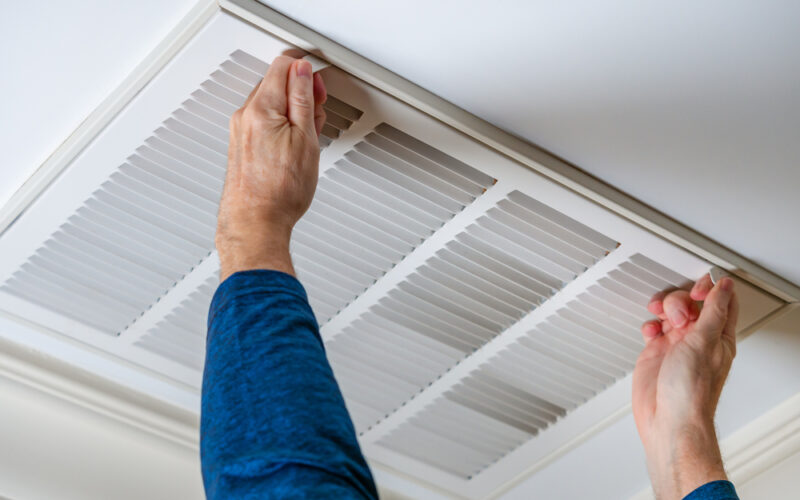
In the world of HVAC (Heating, Ventilation, and Air Conditioning), ducting systems play a critical role in ensuring optimal airflow and air quality within buildings. Traditional ducting materials, such as galvanised steel, have long been the standard choice for constructing ductwork. However, advancements in technology have led to the development of innovative solutions like ALP (Anti-Microbial Low-Pressure) Systems, which offer a range of benefits including improved air quality, energy efficiency, and sustainability.
The Evolution of Ducting Materials
Traditional Ducting Materials: Challenges and Limitations
Historically, ducting systems have been constructed using materials like galvanised steel, aluminium, and fibreglass. While these materials have served their purpose adequately, they come with several inherent challenges and limitations.
Galvanised Steel Ducts
Galvanised steel ducts are durable and fire-resistant, making them a popular choice for commercial and industrial applications. However, they are prone to corrosion over time, especially in humid environments, leading to air leakage and reduced system efficiency. Additionally, steel ducts are cumbersome to install, requiring extensive labour and resources.
Aluminium Ducts
Aluminium ducts offer lightweight and corrosion-resistant alternatives to galvanised steel. However, they are more expensive
and less durable than steel ducts, making them less suitable for high-traffic areas or harsh environmental conditions.
Fibreglass Ducts
Fibreglass ducts are lightweight and provide excellent thermal insulation properties. However, they are susceptible to moisture damage and microbial growth, posing health risks and compromising indoor air quality.
The Rise of Innovative Ducting Solutions
In recent years, the HVAC industry has witnessed a surge in demand for innovative ducting solutions that address the shortcomings of traditional materials. Manufacturers have responded by developing advanced ducting systems like ALP Systems, which leverage cutting-edge technologies to deliver superior performance and efficiency.
Introducing ALP Systems: Revolutionising Ducting Innovation
Understanding ALP Technology
ALP Systems represents a significant advancement in ducting technology, offering a range of benefits that set them apart from conventional ductwork. At the core of ALP Systems is the incorporation of anti-microbial properties, which help combat the proliferation of harmful pathogens and improve indoor air quality.
Anti-Microbial Coatings
One of the key features of ALP Systems is the use of anti-microbial coatings applied to duct surfaces. These coatings contain silver-based compounds that inhibit the growth of bacteria, viruses, mould, and other harmful microorganisms. By preventing microbial contamination, ALP Systems help create a healthier indoor environment for building occupants, particularly in settings like hospitals, schools, and commercial offices where air quality is paramount.
Low-Pressure Design
ALP Systems are engineered with a low-pressure design that minimises energy consumption and reduces operating costs. Unlike traditional ducting systems, which may suffer from air leakage and inefficiencies, ALP Systems are designed to maintain a consistent airflow while minimising pressure drop. This results in improved HVAC system performance and reduced energy waste, leading to significant cost savings over time.
Advantages of ALP Systems Over Conventional Ductwork
ALP Systems offers a multitude of advantages over traditional ducting materials, making them an attractive choice for architects, engineers, and building owners seeking to optimise their HVAC systems. Some of the key benefits include:
Enhanced Air Quality
By incorporating anti-microbial coatings, ALP Systems help eliminate airborne contaminants and improve indoor air quality. This is particularly beneficial for individuals with respiratory conditions such as asthma or allergies, as well as for maintaining a clean and hygienic environment in healthcare facilities, laboratories, and other sensitive settings.
Energy Efficiency
The low-pressure design of ALP Systems reduces the workload on HVAC equipment, resulting in lower energy consumption and operating costs. By minimising pressure drop and air leakage, ALP Systems help maximise the efficiency of heating and cooling systems, ultimately leading to reduced energy bills and environmental impact.
Durability and Longevity
Unlike traditional ducting materials that may degrade over time due to corrosion, moisture damage, or microbial growth, ALP Systems are engineered for durability and longevity. The anti-microbial coatings provide added protection against microbial contamination, while the low-pressure design ensures optimal airflow and system performance for years to come.
Sustainability
ALP Systems are manufactured using environmentally friendly materials and processes, making them a sustainable choice for building projects seeking to minimise their carbon footprint. By reducing energy consumption and improving indoor air quality, ALP Systems contribute to a healthier and more eco-friendly built environment.
Ease of Installation
ALP Systems are lightweight and easy to install, reducing labour costs and construction time compared to traditional ductwork. The modular design allows for quick assembly and customisation, making it suitable for retrofitting existing buildings or integrating into new construction projects.
Applications of ALP Systems
ALP Systems are versatile and can be used in a wide range of applications across various industries. Some common applications include:
Healthcare Facilities
In healthcare settings where infection control is critical, ALP Systems help maintain a sterile environment by minimising the spread of airborne pathogens. The anti-microbial properties of ALP Systems make them ideal for use in hospitals, clinics, and medical laboratories where patient safety is paramount.
Educational Institutions
Schools and universities can benefit from the improved air quality and energy efficiency offered by ALP Systems. By creating a healthy and comfortable learning environment, ALP Systems contributes to student productivity and academic performance.
Commercial Buildings
Office buildings, retail stores, and other commercial properties can enhance occupant comfort and productivity with ALP Systems. The energy-saving capabilities of ALP Systems help reduce operating costs for building owners and tenants, while the anti-microbial coatings promote a hygienic workplace environment.
Residential Properties
Homeowners can enjoy the benefits of ALP Systems in their residential HVAC systems. By improving indoor air quality and reducing energy consumption, ALP Systems creates a healthier and more comfortable living environment for families.
Conclusion
ALP Systems represent a significant advancement in ducting technology, offering a range of benefits including improved air quality, energy efficiency, and sustainability. With their anti-microbial coatings, low-pressure design, and durable construction, ALP Systems provide a cost-effective solution for optimising HVAC systems in a variety of settings. Whether in healthcare facilities, educational institutions, commercial buildings, or residential properties, ALP Systems offer a reliable and efficient way to breathe easy and stay comfortable indoors.
FAQs
Q. How do ALP Systems improve indoor air quality?
A. ALP Systems incorporate anti-microbial coatings that inhibit the growth of bacteria, viruses, and mould, resulting in cleaner and healthier indoor air.
Q. Are ALP Systems suitable for retrofitting existing buildings?
A. Yes, ALP Systems are lightweight and easy to install, making them ideal for retrofitting existing buildings without significant disruption to occupants.
Q. What is the lifespan of ALP Systems?
A. ALP Systems are engineered for durability and longevity, with a lifespan comparable to or longer than traditional ducting materials.
Q. Do ALP Systems require special maintenance?
A. While ALP Systems require minimal maintenance, routine inspections and cleaning may be recommended to ensure optimal performance and longevity.
Q. Are ALP Systems environmentally friendly?
A. Yes, ALP Systems are manufactured using environmentally friendly materials and processes, making them a sustainable choice for green building





